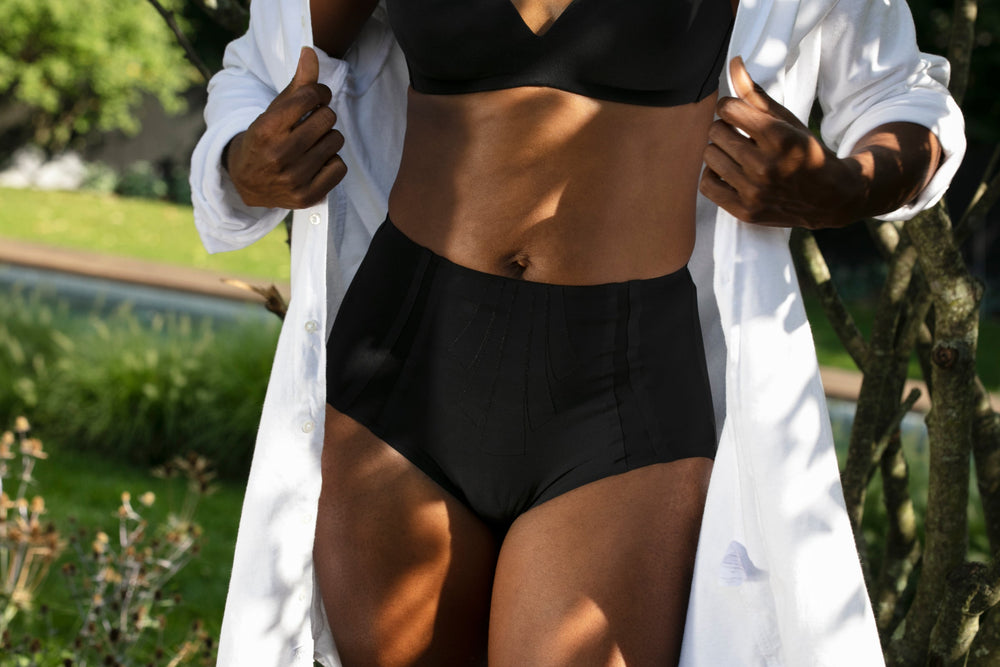Staying active isn’t just a lifestyle—it’s a lifeline. For many women, running is a form of freedom, strength, and self-expression. But for those managing bladder leaks, especially stress urinary incontinence (SUI), this movement can also bring anxiety.
If you’ve ever worried about a leak mid-stride or avoided running altogether because of discomfort, you’re not alone. What you need isn’t just a pad—it’s the right pad. Let’s break down exactly what to look for in the best incontinence pads for running, so your only focus is the road ahead.
Why Runners Need Specialized Leak Protection
Running challenges the body in incredible ways, but it also puts significant pressure on the pelvic floor. For women experiencing stress urinary incontinence, that pressure can result in small, unexpected leaks during high-impact activities like running, jumping, or lifting. It’s estimated that up to 45% of women who exercise regularly experience some form of urinary incontinence, with higher rates in high-impact athletes [1].
The repetitive motion of running—combined with heat, friction, and sweat—can also create the perfect storm for discomfort if you’re wearing the wrong protection. Traditional menstrual pads may not be designed for bladder leaks, and generic incontinence pads often don’t prioritize movement or moisture-wicking comfort.
That’s why runners need a pad that’s built with dynamic support in mind. It’s not just about catching leaks—it’s about staying dry, protected, and confident through every stride.
Key Features to Prioritize in a Running Pad
Not all incontinence pads are designed with runners in mind. The best options for active movement combine absorbency with flexibility and skin safety. Here’s what to look for:
1. Slim but High Absorbency
A bulky pad won’t just feel uncomfortable—it can shift, bunch, or chafe during a run. Look for ultra-thin pads that are discreet under running tights but still powerful enough to handle leaks. Good incontinence pads for running should absorb quickly and lock moisture away to keep you dry mile after mile.
2. Stay-in-Place Design
Movement can cause pads to shift unless they’re designed to contour with your body. Adhesive strips and ergonomic shaping are essential. A pad that stays where it should reduces distractions and allows you to focus on your pace, not your protection.
3. Breathable, Moisture-Wicking Top Sheet
During long or intense runs, sweat is inevitable. Combine that with trapped moisture from leaks, and you have a recipe for irritation. Breathable, quick-dry materials help reduce humidity and friction in sensitive areas, making them critical for comfort and skin health [2].
4. Odor Control
Running outdoors or at the gym shouldn’t come with the worry of odor. A quality incontinence pad should neutralize unwanted smells discreetly without relying on synthetic fragrances, which can often irritate the skin.
5. Skin-Safe Materials
With repetitive motion and moisture, runners are more prone to developing incontinence-associated dermatitis (IAD) and chafing. That’s why dermatologically-tested, hypoallergenic, plant-based top sheets are important—not just for sensitive skin, but for long-term skin health [2].
A Pad That Moves With You
That’s why we designed a pad that doesn’t just absorb—it moves with you.
Attn: Grace’s Moderate and Heavy Pads are tailored to active women seeking comfort, discretion, and dependable protection. Whether you’re heading out for a 5K or squeezing in a treadmill session, these pads are designed to support you every step of the way.
-
Ultra-thin, high-absorbency core: Keeps you dry without feeling bulky.
-
Secure, no-bunch fit: Contours to your body to prevent shifting as you move.
-
Skin-Safe™ top sheet: Made from plant-based fibers, completely free from PFAS, dyes, and added fragrances.
-
Fragrance-free odor-control: Effective, but gentle on sensitive skin.
-
Designed for confidence: Backed by thousands of 5-star reviews from real women, and supported by our 60-day money-back guarantee.
How to Test a Pad Before Race Day
Just like breaking in your running shoes, it’s important to trial your pads before your big event. A test run gives you the chance to assess absorbency, fit, and comfort.
Here’s how to make the most of it:
-
Test absorbency levels: Try both moderate and heavy options during different workout intensities to find the right match.
-
Check for movement or bunching: If you feel the pad shifting during a light jog, it may not hold up under race-day pressure.
-
Watch for chafing or heat buildup: Consider wearing the pad on a humid day or during a longer run to evaluate breathability and comfort.
-
Assess overall feel: Beyond leak protection, ask yourself: Do I feel confident wearing this? Can I move freely?
By taking the time to evaluate performance in training, you’ll avoid surprises—and discomfort—on race day.
Performance Without Compromise
Managing bladder leaks while running doesn’t mean giving up the activities you love. You deserve protection that supports your strength, your speed, and your stride, with no compromise on comfort or confidence.
At Attn: Grace, we believe every woman should feel empowered in motion. That’s why our pads are designed not just for absorbency, but for real life. Whether you’re training for your next 10K or just getting back into your fitness groove, we’re here to help you move forward with dignity, protection, and grace.
Explore our full pad collection today and discover the support you’ve been looking for.
References
[1] Nygaard, Ingrid E., et al. “Urinary incontinence and pelvic floor dysfunction in physically active women.” Obstetrics and Gynecology Clinics of North America, vol. 36, no. 3, 2009, pp. 685–701. https://pubmed.ncbi.nlm.nih.gov/25640047/
[2] Beeckman, D., Van Lancker, A., Van Hecke, A., & Verhaeghe, S. (2014). A systematic review and meta-analysis of incontinence-associated dermatitis, incontinence, and moisture as risk factors for pressure ulcer development. Research in Nursing & Health, 37(3), 204–218. https://pubmed.ncbi.nlm.nih.gov/24700170/
